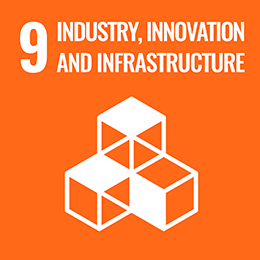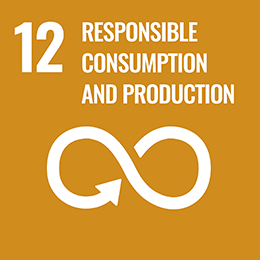Plastic Planet

Share this article
Rubbish or Resource?
"Plastic is indeed now on the menu" - Prince of Wales
Imagine an island three times the size of France located somewhere between Hawaii and California. Idyllic, right? Hardly. Known as the Great Pacific Garbage Patch, this 1.6 million square kilometre floating mass is made up of more than 1.8 trillion pieces of rubbish.
Referring to the amount of plastic that has never been recycled, the 2018 International Statistic of the Year was 90.5%. Merge this number with images of dead whales with 40kg of plastic in their stomachs or a turtle with a straw stuck in its nose, and you have a vivid reminder of the legacy we are leaving.
Since plastics first took off 60 years ago, 8.3 billion metric tons—equivalent in weight to one billion elephants—have been created; 6.3 billion metric tons have ended up as waste; and in 2015 it was estimated that more than eight million metric tons enter the sea each year. This means that there could be more plastic than fish in the sea by 2050, according to the Ellen MacArthur Foundation.
With fish now eating plastic like teens eat fast food, as you bite into your next tuna sandwich, remember the Prince of Wales’ words: “Plastic is indeed now on the menu”. And it’s not just fish. Thanks to mosquitoes and other insects, micro-plastic pollution is now airborne and can be found in honey and beer, as well as in bottled water.
If current production and waste management trends continue, 12 billion metric tons of waste will be in landfills or the natural environment by 2050 too. How did we get here?
Part of the problem has been that much of the West’s waste has been shipped to China and thus out of sight and mind. When China closed its doors¹ to all but the highest quality (and value) of trash bundles, western nations were forced to face the, quite literally, mounting problem.
This, combined with the Attenborough-effect on the planet-conscious Generation Z, means that plastics is now in the throes of a revolution.
At an individual level, zero waste living is spawning blogs, books and countless social media influencers all laden with clever hacks to eliminate or reduce waste. Researchers are exploring wax worms and mushrooms that eat plastic waste and while New Zealand and Cape Town are pioneering ‘naked’ shopping, zero waste shops are popping up in the UK too.
With a million plastic bottles bought around the world every minute, a number expected to increase by another 20% by 2021, solving the plastic bottle problem is crucial. The market in reusable water bottles is thriving and valued at more than $8 billion, with Evian’s parent, Danone, working with Loop Industries to make all of its bottles from recycled plastic by 2025.
Right now, innovative water bottle alternatives range from Choose Water’s recycled paper bottles to Skipping Rocks Lab’s seaweed packaging². Skipping Rocks’ Ooho edible pods are on sale in Selfridges as fruit juice shots and were trialled at the last half marathon in London when plastic bottles were banned.
Thanks to Sir David Attenborough’s documentaries Blue Planet II and Our Planet there has been a 53% drop in use of single use plastics. Take the ubiquitous plastic bag. Five trillion are used each year with at least 70% going into the environment, taking anywhere from 10 to 1,000 years to decompose.
Following a review by the UN Environment Programme, 127 countries are looking at regulating single use and micro plastics. Banning plastic bags, which has happened in at least 15 countries, is certainly one solution, but it does not solve the problem that paper bags can lead to deforestation and fabric ones are expensive to produce.
The desire to find plastic alternatives has spearheaded some impressive packaging innovations such as soluble (and drinkable) shopping bags made of either cassava or calcium carbide and natural gas; foam plastic made from milk protein and clay; IKEA’s use of mushroom-based packaging; bagasse, a by-product of sugarcane processing, used to replace polystyrene takeaway boxes; and Waitrose’s compostable food film made out of seafood shell chitin.
But to achieve the scale required by 2050, rethinking plastics requires more than beach cleaning initiatives and straw-banning by well-intentioned corporations such as Starbucks and Hyatt. This is why stopping the flow of plastic at source is Dame Ellen MacArthur’s vision.
Last October, in collaboration with the UN Environment, the Ellen MacArthur Foundation unveiled the New Plastics Economy Global Commitment now signed by more than 350 organisations including: Tetra Pak, Apple, Danone, H&M, L’Oreal and PepsiCo, as well as governments such as Rwanda and cities like Sáo Paulo. Meanwhile financial institutions with more than $4 trillion in assets under management have endorsed the commitment.
MacArthur’s circular New Plastics Economy revolves around elimination, innovation and circulation, which if it were to be applied to all the plastic in the world not yet recycled could theoretically be worth $7.2 trillion.
So, can both people and the planet profit from plastic?
In addition to exploring opportunities in the emerging (and complex) world of bioplastics, the most obvious place to start is the global plastic recycling market. Valued at $25.6 billion in 2017, the global plastic recycling market is expected to reach $41.2 billion by the end of 2025, growing at a CAGR of 6.1% during 2018-2025.
Recycled plastics can be used for almost everything from packaging and consumer goods, to construction and clothing. At the moment, clothing is the largest application of recycled plastics with market share of 30.81% in 2017, since nearly 80% of recycled polyethylene terephthalate (commonly abbreviated to PET) is used to produce fibre.
Just look at Adidas. It’s limited edition of 7,000 pairs of trainers—each containing the equivalent of 11 plastic bottles worth of waste—sold out instantly. In 2017, it sold one million of the UltraBoost shoes and has just released Adidas Futurecraft Loop, the first performance running shoe that you give back to Adidas for recycling.
The sports brand, which teamed up with Parley for the Oceans, is now making swim suits and clothing. What started as a special edition trainer, could now bring in more than $1 billion in revenues.
Roads are another area where recycled plastic can make an impact. More than six years ago, the south Indian state of Tamil Nadu began laying plastic roads. Sixty of India’s largest cities generate 15,000 tonnes of plastic waste every day, so now the Indian government has made it mandatory for road developers to mix waste plastic with bitumen.
Plastic roads are popping up in the US, Holland and South Africa, but this year, the UK’s Department of Transport approved a £1.6 million trial of MacRebur’s plastic road technology in Cumbria. Around 700,000 plastic bottles can now be used to make one kilometre of road.
Ironically, the real problem right now is the demand for recycled plastics is outstripping supply. According to projections by McKinsey, mechanical recycling rates could increase from the current level of 12% of total plastics volumes to 15% to 20% of the much larger projected total plastics output by 2030.
The universe of companies involved in chemical recycling—converting plastic scrap into pellets via purification, decomposition and conversion technologies—exists but the infrastructure is limited. According to the report there is a $120 billion plastics market in the US and Canada alone that could be met by recovering waste plastics.
In The Graduate, Dustin Hoffman is given one word of advice for his post graduate future. That word is ‘plastics’. Then like now (but for different reasons), plastics was a repugnant uncool notion. Yet a few packaging fortunes have been built on petrochemical derivatives since 1967.
The time has come to make (recycled) plastics cool again. Patagonia, Nike and Adidas are riding this wave and tomorrow’s graduate is in the driving seat.
Photo: © Niki Natarajan 2019
Artist: Sophy Robson
¹ Why the world’s recycling system stopped working, Financial Times (25.10.2018)
² How edible seaweed could combat plastic pollution of the seas, Financial Times (5.12.2018)
Article for information only. All content is created and published by CdR Capital SA. The views and opinions expressed in this article are those of the author(s). Information on this website is only directed at professional, institutional or qualified investors and is not suitable for retail investors. None of the material contained on this website is intended to constitute an offer to sell, or an invitation or solicitation of an offer to buy any product or service. Nothing in this website, or article, should be construed as investment, tax, legal or other advice.
Related articles
Pollution
Mount Kenya visible Nairobi and some of the most polluted waterways are running clear. The Great Lockdown’s silver lining has been a drop in air pollution and increase in water quality. Is choosing between the economy and our collective health right?

Fashion Footprint
As Fashion Week draws to a close, the $2.4 trillion industry that employs some 60 million people and creates 100 billion garments a year is embracing a new trend. From Green Carpet Awards to a G7 Fashion Pact, fashion is minimising its carbon footprint.

Future of Food
Pea protein shrimp, lab grown burgers and cricket flour pancakes: sci-fi menu or the future of food? Population projections heading to 10 billion, meat demand increasing yet food production is not sustainable even if farmers are already growing enough.





